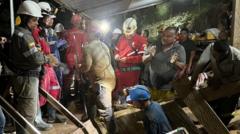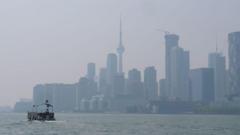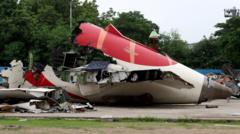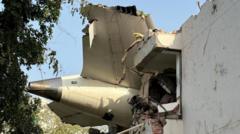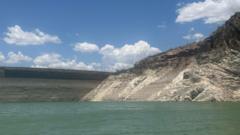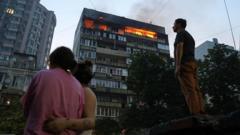As they prepare for the climbing season, Nepal's Sherpas may finally receive relief from dangerous manual labor on Mount Everest, thanks to drones designed to transport heavy loads.
**Drones Set to Revolutionize Load Transport for Sherpas on Everest**

**Drones Set to Revolutionize Load Transport for Sherpas on Everest**
High-tech drones aim to enhance safety for mountain guides by reducing heavy workloads in dangerous terrains.
In the coming climbing season on Mount Everest, expedition companies are ready to implement state-of-the-art drones to assist the Sherpas who traditionally carry heavy baggage for climbers up the perilous mountain. These drones are engineered to lift loads weighing up to 35 pounds, easing the burden on the mountain guides by transporting essentials from base camp to higher elevations more efficiently and swiftly. In a remarkable contrast to the seven hours it usually takes to carry supplies by foot, the drones can fulfill this task in approximately 15 minutes.
The decision to deploy drones comes at a crucial time, especially since the risks faced by Sherpas have surged amidst the backdrop of climate change, which has accelerated snowmelt and caused more frequent accidents. “Sherpas endure significant dangers in their work; drones could make their jobs notably safer, quicker, and more effective,” remarked Tshering Sherpa, a member of the Sagarmatha Pollution Control Committee established to manage routes through the perilous Khumbu Icefall.
For about a year now, experimental flights have been conducted using two drones provided by a Chinese manufacturer. The upcoming pilot test during the climbing season is seen as an essential step towards convincing expedition agencies to invest in further drone technology. These drones could potentially carry not only climbing gear but other vital supplies like oxygen tanks.
While the initial investment required for these drones could be substantial, supporters advocate for them as a long-term cost-saving solution for expedition companies, emphasizing that the benefits brought by diminished physical burdens may outweigh the initial expenditures associated with implementing the technology.
The decision to deploy drones comes at a crucial time, especially since the risks faced by Sherpas have surged amidst the backdrop of climate change, which has accelerated snowmelt and caused more frequent accidents. “Sherpas endure significant dangers in their work; drones could make their jobs notably safer, quicker, and more effective,” remarked Tshering Sherpa, a member of the Sagarmatha Pollution Control Committee established to manage routes through the perilous Khumbu Icefall.
For about a year now, experimental flights have been conducted using two drones provided by a Chinese manufacturer. The upcoming pilot test during the climbing season is seen as an essential step towards convincing expedition agencies to invest in further drone technology. These drones could potentially carry not only climbing gear but other vital supplies like oxygen tanks.
While the initial investment required for these drones could be substantial, supporters advocate for them as a long-term cost-saving solution for expedition companies, emphasizing that the benefits brought by diminished physical burdens may outweigh the initial expenditures associated with implementing the technology.


